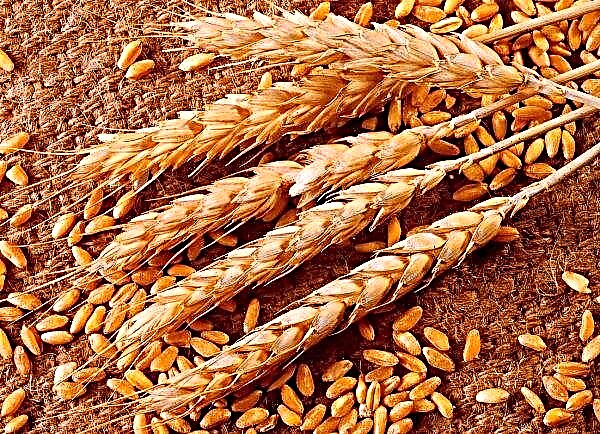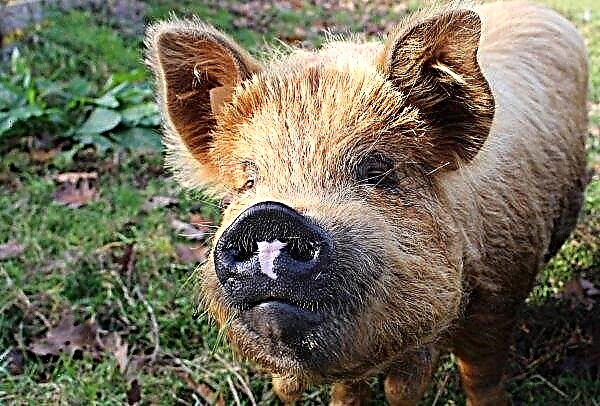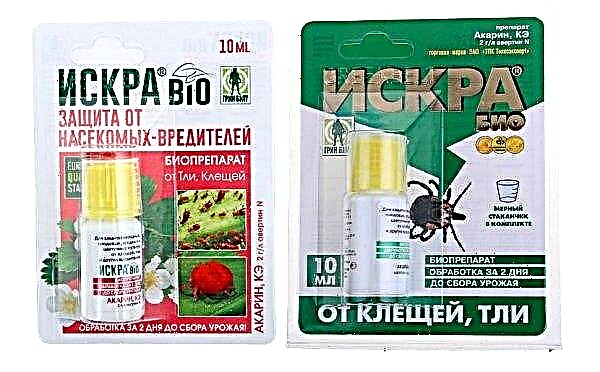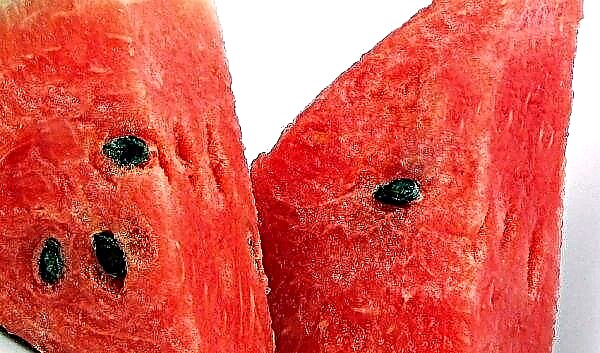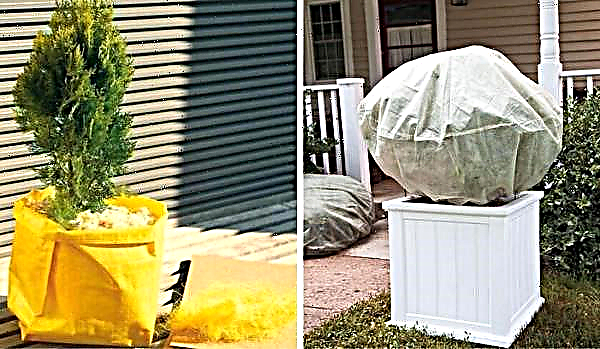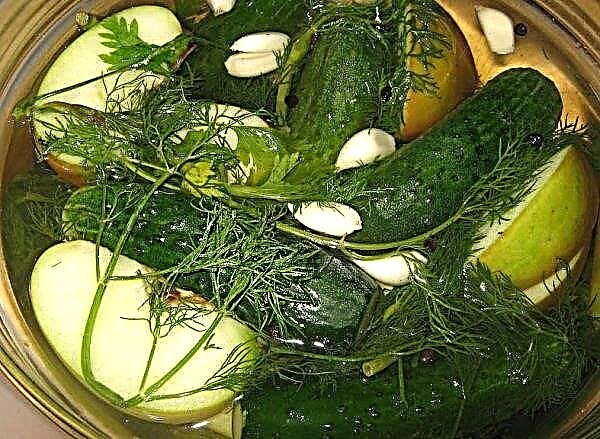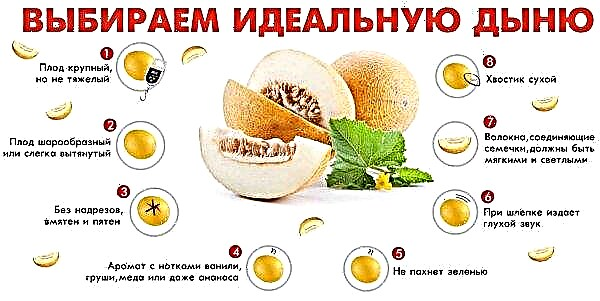In regions with insufficiently warm climates, cucumbers are often grown in greenhouses. At the same time, many gardeners are faced with the problem of yellowing and falling of ovaries, which leads to loss of crop. To stop this process, you need to find out the cause of this phenomenon and make adjustments to the daily care of the beds. The main factors affecting the falling of ovaries of cucumbers, methods of solving the problem and the necessary preventive measures are considered in the article.
The main reasons why the cucumbers fall ovaries in the greenhouse
For successful cultivation of cucumbers in a greenhouse, you need to create suitable microclimate conditions inside the structure and carry out proper care of the beds. Plants can shed ovaries when there is a lack of sunlight or as a result of a violation of the basic techniques of agricultural technology. Therefore, in order to preserve the harvest and stop the falling of the ovaries, it is necessary to analyze all the possible causes of this phenomenon. The main factors affecting the discharge of ovaries in cucumbers are discussed further in the article.
Did you know? 95% of the pulp of cucumber consists of water, and 100 g of the product contains only 150 kcal.
Lack of lighting
All plants need light for the photosynthesis process and cucumbers are no exception. With a lack of sun in the greenhouse, the bush cannot receive the energy necessary for normal growth, therefore it begins to "save" power and resets the ovaries.
The basic lighting requirements of cucumbers are listed below:
- plants need a lot of sun - they should be under its rays most of the day;
- bushes of cucumbers will receive most of the light in a greenhouse, placed in the direction from east to west or from north to south (for southern regions);
- this culture in the greenhouse cannot be cultivated next to tall plants - they will cast a shadow on the cucumbers;
- with a lack of natural light, the bushes need to be illuminated with a phytolamp.
Did you know? Cucumbers were known in ancient Egypt - they were laid in the tombs of the pharaohs along with other vegetables and fruits.
Wrong watering mode
Cucumbers love moist soil and need regular watering, but bushes in the greenhouse should be irrigated using a certain technology. Violation of the irrigation regime can cause serious stress in plants, which will result in the discharge of ovaries.
The main recommendations for irrigating cucumbers are as follows:
- irrigation of beds is carried out only with warm water (about +23 ° C) - watering with cold liquid weakens plants and reduces the number of female flowers;
- in the heat, it is best to water the bushes in the morning - this will prevent the rapid evaporation of moisture from the soil;
- during cool weather, cucumbers are irrigated during the day so that the moist soil has time to warm up.
Important! If only a few of them grow yellow and fall among the many ovaries of the bush, then you should not worry - so the plants get rid of the extra load, ensuring the timely ripening of the remaining fruits.
Deficiency or excess moisture in the soil
A lack of moisture is detrimental to plants, causing the bush to save strength and get rid of ovaries. But an excess of water can increase humidity in the greenhouse and cause various diseases, which, in the future, will lead to falling of the ovaries. To ensure the most comfortable soil moisture level for cucumbers, it is enough to know the requirements of this culture for the amount of water at different stages of growth:
- before flowering, bushes need a lot of water, so it is recommended to water them at least 2 times a week, spending about 3-4 liters of water per 1 m²;
- at the beginning of flowering, the beds are not irrigated for several days - this stimulates the appearance of more female flowers;
- the soil around the cucumbers should not be allowed to dry after female flowers have formed on them - the bushes need moisture to nourish the ovaries and form fruits;
- during flowering and after it, cucumbers are watered once every 2-3 days, and on 1 m² of beds, at the same time, 6-12 liters of water are consumed.

Thickened landings
For the normal development of the ovaries and the formation of full-fledged fruits, it is necessary that each bush of cucumbers receive from the soil a sufficient amount of moisture and nutrients and are well lit by the sun. For this purpose, when planting plants in a greenhouse, you need to take into account the nutritional area needed for each of them.
Important! During flowering, in no case can male flowers be removed on cucumbers - they do not form an ovary, but are needed for pollination of female inflorescences.
The main recommendations for placing cucumber bushes are listed below:
- when planting each particular variety of vegetables, one must take into account the layout of bushes indicated by the manufacturer on the seed packaging;
- for parthenocarpic hybrids, the number of plants per 1 m² is 1-2 shrubs;
- varieties of cucumbers pollinated by insects can be planted more densely - 2-3 plants per 1 m²;
- it is necessary to carry out the formation of a bush, removing actively growing lashes without ovaries and fruits - they cast a shadow on neighboring plants and impede the free circulation of air in the beds, causing the appearance of diseases.

Mineral nutrition
During flowering and fruiting, cucumbers consume the maximum amount of nutrients from the soil. At each stage of development, the bushes need certain fertilizers, since with a lack of the necessary elements, plants will not be able to grow a plentiful crop and begin to get rid of the ovaries.
Important! To enrich the soil with potassium, during the flowering of cucumbers, 300 g of wood ash can be added per 1 m².
The main requirements of this culture for feeding:
- before flowering, fertilizers containing nitrogen are applied under the bushes - solutions of chicken droppings and mullein are suitable for this purpose;
- at the stage of forming flowers and ovaries, cucumbers are watered with solutions of complex mineral fertilizers containing potassium and phosphorus (for example, “Kristalon”);
- during abundant watering, nutrients are washed out of the soil, therefore it is recommended to fertilize the beds with cucumbers at intervals of 1 time in 10 days.

Pollination problems
The massive fall of the ovaries of cucumbers may indicate that pollination of plants did not occur. Varieties pollinated by bees can shed ovaries in hot or cloudy weather. This is due to the fact that insects do not fly during intense heat, and if the air temperature inside the building becomes more than +35 ° C, the pollen becomes sterile and fertilization does not occur.
To make the air in the greenhouse cooler, perform ventilation of the structure by opening the doors and windows. When growing bee pollinated cucumber varieties, it is necessary to provide insects with free access to the structure during the period from 6:00 to 10:00 - these watches are the most suitable for pollination.
What to do and how to solve the problem?
After the reasons for the mass falling of the ovaries are determined, it is necessary to correct the mistakes made and provide the cucumbers with the most comfortable conditions for the growth and formation of fruits. Depending on the specific situation, this problem can be solved using the following actions:
- pinching the top of the shoots to a length of 20–25 cm - It will help to improve the access of light to plants and save them from the need to spend energy on building up a dense green mass;
- during flowering and the formation of ovaries exclude fertilizers with nitrogen - they stimulate the growth of leaves, and the plant does not have the strength to ripen the fruit;
- to stop ovarian decay due to lack of potassium, cucumbers irrigate a solution of 10 liters of water, 3 tbsp. l wood ash and 1 tbsp. urea
- adjust the watering mode, so that the soil around the plants is moderately moist, but not sour;
- in the absence of pollinating insects, carry out the fertilization of flowers manually - for this you need to pick a male flower that has stamens with pollen, and press it to the stigma of a female flower;
- you can attract bees to the greenhouse for pollination of cucumbers by spraying bushes a solution of 1 tbsp. water and 1 tsp of honey.
How to prevent ovary falling in the greenhouse?
It is much easier to prevent a problem from arising than to deal with its consequences. Therefore, before planting cucumbers in the greenhouse, it is recommended to perform several preventive measures that will help to avoid falling of ovaries on the plants. Such measures include:
- choosing the right variety of cucumbers for growing in a greenhouse - different types of this crop may need different conditions for normal growth;
- the location of the greenhouse on a well-lit area away from trees and buildings - facilitates the access of sunlight to the inside of the structure;
- fertilizing the soil in the beds before planting cucumbers - for this it is recommended to use complex formulations containing nitrogen, potassium and phosphorus;
- compliance with the schedule and irrigation standards;
- removal of excess ovaries, if their number is too large - this will help reduce the load on the plant, and also ensure the ripening of the remaining fruits;
- monitoring the air temperature in the greenhouse to avoid sudden changes;
- regular collection of ripened vegetables so that the bush can form a new portion of fruits.

Tips from experienced gardeners
Cucumbers can shed ovaries for many reasons, therefore, when growing this crop in a greenhouse, it is important to adhere to certain recommendations. Experienced gardeners are advised to perform the following manipulations:
- when growing parthenocarpic varieties, maintain the temperature in the greenhouse during the day +22 ... + 24 ° С, and at night - at least +17 ... + 18 ° С;
- for varieties of cucumbers pollinated by insects, the optimum temperature in the greenhouse is +25 ... + 27 ° С during the day, and about +20 ... + 21 ° С during the night;
- during cooling, you can additionally cover the walls of the structure with a foamed film or install a heater in the greenhouse;
- it is necessary to monitor the temperature of the upper soil layer - it should not fall below +15 ° C;
- in order to avoid infection of the bushes with bacteriosis, causing the ovaries to fall, it is recommended to spray the beds with a 1% solution of Bordeaux fluid;
- if the ovaries begin to decay, it is recommended to remove them, and treat the cut site with a solution of potassium permanganate.
Falling ovaries of cucumbers in the greenhouse is a rather serious problem that sometimes arises even in experienced gardeners. If the cause of this phenomenon is correctly determined, then crop loss can be prevented using the tips and recommendations listed in this article.


